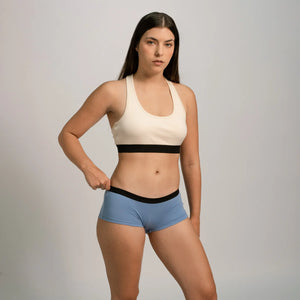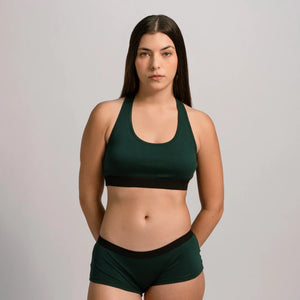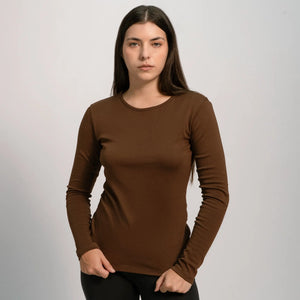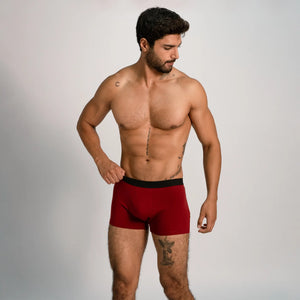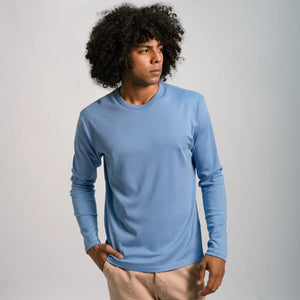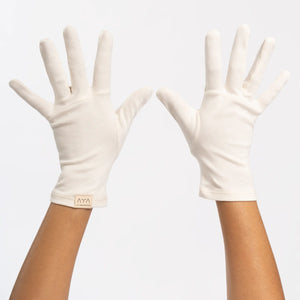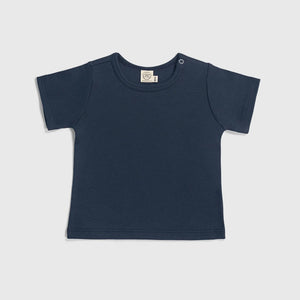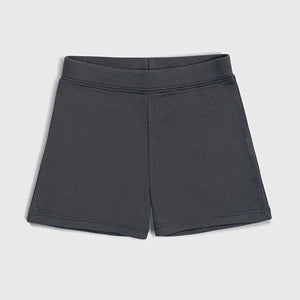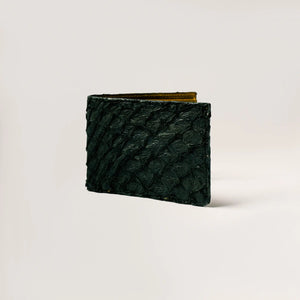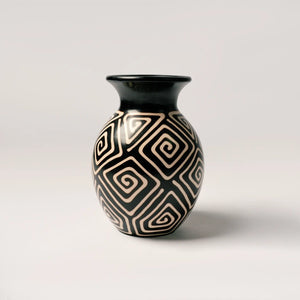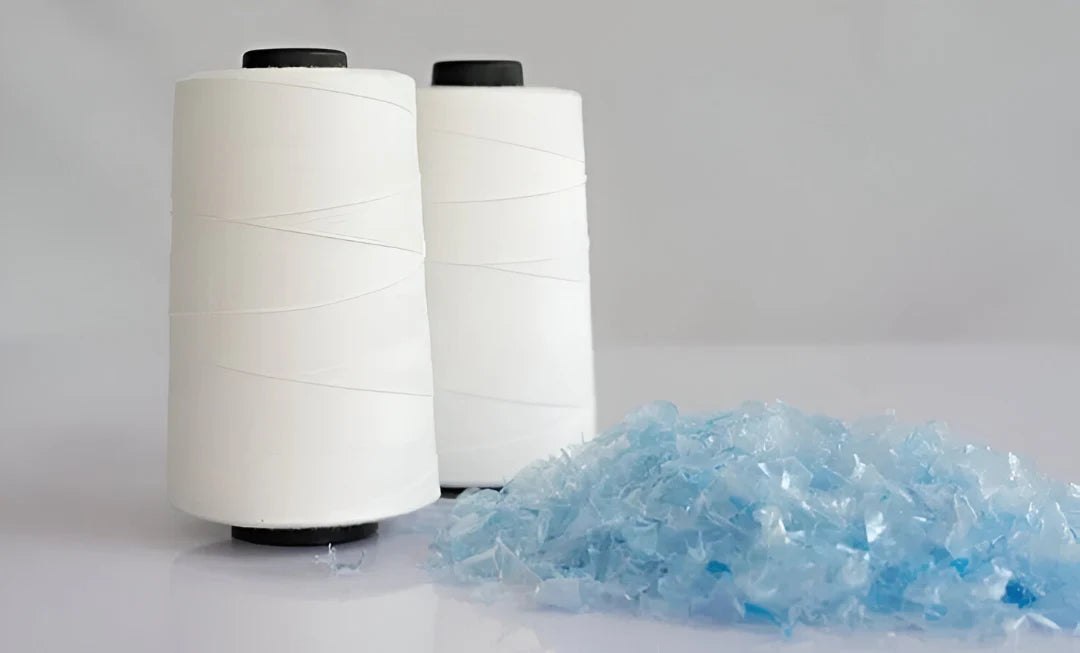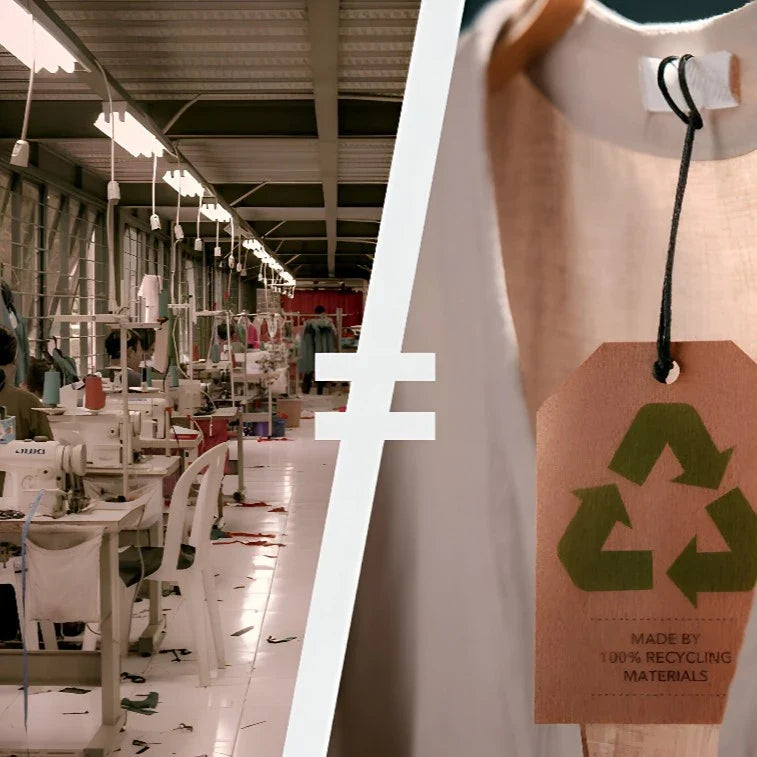EU Green Claims Law Cancelled:
What It Means for Greenwashing in Fashion Industry
.
AYA | AUGUST 1, 2025
READING TIME: 4 minutes
By Jordy Munarriz
AYA | AUGUST 1, 2025
READING TIME: 4 minutes
By Jordy Munarriz
In recent years, the global rise in consumer demand for sustainable products has prompted companies across industries—especially fashion—to adopt “green” marketing. From carbon-neutral promises to recycled packaging claims, the language of sustainability has become indispensable. But a significant portion of these environmental claims are unsubstantiated, misleading, or outright false. This is greenwashing.
Why Greenwashing Requires Strong Regulation to Protect Consumers
The European Commission estimated that over 53% of green claims in the EU were vague, misleading, or unfounded, and around 40% had no supporting evidence at all [1]. This growing mistrust not only harms consumer confidence but also undermines genuinely sustainable businesses competing in a market flooded with empty promises.
In response, the EU began crafting a series of legislative initiatives aimed at protecting consumers and creating a level playing field. The two most notable proposals were the “Green Claims Directive” and the broader “Directive on Empowering Consumers for the Green Transition”. Together, they would have banned vague environmental language like “eco-friendly” or “climate neutral” unless verifiable, and required companies to provide substantiated, science-based evidence for any green claims [2].

Picture by Xavier Lejeune.
The EU Reverses Course on Green Claims Directive
In an unexpected move, the European Commission announced in July 2025 that it would withdraw the Green Claims Directive entirely [3,4]. Despite months of negotiations and widespread support from environmental NGOs and consumer advocates, the regulation was shelved following Italy’s decision to back out of talks—triggering a collapse in consensus among member states [5].
This reversal has drawn sharp criticism. Critics argue that without mandatory regulations, companies will continue to misuse sustainability language unchecked. Several sources now warn that the EU’s credibility in leading the global green transition is being undermined [6].
Greenwashing Laws Around the World
While the EU pulls back, the United Kingdom has been advancing its own anti-greenwashing measures. The UK’s Advertising Standards Authority (ASA) has already banned several sustainability ads, and the Financial Conduct Authority (FCA) plans to implement a labeling system for ESG funds by the end of 2025 [7].
In the United States, the Federal Trade Commission (FTC) is currently reviewing its Green Guides, which outline how marketers can avoid deceptive environmental claims. However, these guides remain non-binding and are seen as too lenient by watchdog organizations [8].
Latin American countries are beginning to take greenwashing more seriously, Colombia and Chile have introduced guidelines for environmental claims. Meanwhile, and in Spain, a new national regulation aligns with broader EU goals by requiring companies to provide verifiable evidence for green claims made in marketing and labeling [9].

Picture by Jesús Hellín / Europa Press.
Greenwashing in Fashion: A Particularly Vulnerable Sector
The fashion industry is especially notorious for greenwashing. Brands routinely label clothing lines as “sustainable” without disclosing fiber sources, manufacturing emissions, or labor practices. This behavior as not merely misleading but actively harmful, as it distracts from the structural changes needed in fashion supply chains [10].
Several cases have made headlines: from multinational fast fashion companies claiming to use “recycled” fabrics (while disclosing no percentages), to luxury brands pushing “carbon neutrality” achieved largely through dubious offsetting schemes. The lack of enforcement means that even high-profile brands often go unchecked.
Changing Demographics and Preferences
The pandemic also highlighted shifting demographics in the fashion market. Younger consumers, particularly Gen Z and Millennials, became increasingly influential in shaping purchasing trends. Research from the Institute for Sustainable Fashion indicates that younger generations are more likely to support sustainable brands, with 83% of Millennials stating they prefer to buy from companies that share their values [7,8].
Moreover, with the rise of remote work, many consumers reported a preference for comfort over style. A study published in the Journal of Fashion Marketing and Management noted that comfort became the primary driver of clothing purchases for many consumers, with 65% prioritizing comfort in their buying decisions [9]. This trend is likely to persist as remote work becomes a more permanent aspect of many industries.

Changing Demographics and Preferences
The pandemic also highlighted shifting demographics in the fashion market. Younger consumers, particularly Gen Z and Millennials, became increasingly influential in shaping purchasing trends. Research from the Institute for Sustainable Fashion indicates that younger generations are more likely to support sustainable brands, with 83% of Millennials stating they prefer to buy from companies that share their values [7,8].
Moreover, with the rise of remote work, many consumers reported a preference for comfort over style. A study published in the Journal of Fashion Marketing and Management noted that comfort became the primary driver of clothing purchases for many consumers, with 65% prioritizing comfort in their buying decisions [9]. This trend is likely to persist as remote work becomes a more permanent aspect of many industries.

Changing Demographics and Preferences
The pandemic also highlighted shifting demographics in the fashion market. Younger consumers, particularly Gen Z and Millennials, became increasingly influential in shaping purchasing trends. Research from the Institute for Sustainable Fashion indicates that younger generations are more likely to support sustainable brands, with 83% of Millennials stating they prefer to buy from companies that share their values [7,8].
Moreover, with the rise of remote work, many consumers reported a preference for comfort over style. A study published in the Journal of Fashion Marketing and Management noted that comfort became the primary driver of clothing purchases for many consumers, with 65% prioritizing comfort in their buying decisions [9]. This trend is likely to persist as remote work becomes a more permanent aspect of many industries.

Changing Demographics and Preferences
The pandemic also highlighted shifting demographics in the fashion market. Younger consumers, particularly Gen Z and Millennials, became increasingly influential in shaping purchasing trends. Research from the Institute for Sustainable Fashion indicates that younger generations are more likely to support sustainable brands, with 83% of Millennials stating they prefer to buy from companies that share their values [7,8].
Moreover, with the rise of remote work, many consumers reported a preference for comfort over style. A study published in the Journal of Fashion Marketing and Management noted that comfort became the primary driver of clothing purchases for many consumers, with 65% prioritizing comfort in their buying decisions [9]. This trend is likely to persist as remote work becomes a more permanent aspect of many industries.

France and Argentina: Where Policy and Protest Collide
France has taken bold steps by passing a law in 2023 requiring brands to disclose the environmental impact of clothing and banning the use of terms like “biodegradable” or “carbon neutral” unless scientifically verified. This law also prohibits destroying unsold inventory—a major issue in luxury fashion [11].
Meanwhile, in Argentina, public trust in green claims plummeted after high-profile brand withdrawals like Forever 21. The exit sparked national conversations about the exploitative labor models behind cheap fashion and the illusion of “eco” capsules produced under the same fast fashion systems. Activists now demand stronger truth-in-advertising laws to address this vacuum [12].

Photo by Andrew Aitchison. Source: Forbes.
AYA's Recommendations and Commitment
Despite policy setbacks, consumers and responsible brands still have the power to change the narrative. A few key strategies can help:
- Look for verified certifications: Independent labels like GOTS or OEKO-TEX offer benchmarks verified by global standards.
- Demand transparency: Ask brands for supply chain traceability and proof of claims.
- Reject vague terms: Words like “green,” “eco,” or “planet-friendly” mean little without context or data.
- Support policy reforms: Advocate for legislation that holds companies accountable for their claims.
- Invest in timeless, traceable fashion: Choose pieces made from certified natural fibers with verifiable impact.
At AYA, we believe that fashion should speak the truth. Our entire collection is made with certified organic Peruvian Pima cotton—fully traceable, biodegradable, and responsibly sourced from single-origin farms. We don’t chase trends. We build clothing that reflects ethical choices, cultural heritage, and transparency from seed to stitch.
Because honesty is the foundation of sustainability.

Glossarykeywords
Carbon Neutral:
A state where a company or product has a net-zero carbon footprint, meaning it balances the amount of carbon dioxide it releases into the atmosphere with the amount it removes.
Directive on Empowering Consumers for the Green Transition:
A broader EU directive that aimed to protect consumers from misleading environmental claims and encourage them to make more sustainable purchasing decisions.
ESG Funds:
A type of investment fund that focuses on companies with strong performance in environmental, social, and governance factors, such as their approach to climate change, labor practices, and corporate leadership.
GOTS (Global Organic Textile Standard):
A globally recognized certification that ensures textiles are made from organic fibers and follow strict environmental and social criteria throughout the entire supply chain.
Green Claims Directive:
This was a proposed law in the European Union (EU) designed to ban vague and unsubstantiated environmental claims, forcing companies to provide scientific evidence for their "green" labels. It was unexpectedly withdrawn.
Greenwashing:
This is a deceptive marketing practice where a company makes misleading or false claims about its products or practices being environmentally friendly.
Fast Fashion:
A business model that mass-produces inexpensive clothing quickly to match current trends, often using synthetic fibers and leading to environmental harm.
Microplastics:
Tiny plastic particles (less than 5mm) released from larger plastic items or synthetic fabrics, now found in water, food, and even human organs.
OEKO-TEX:
An international certification system that tests textiles for harmful substances. A product with an OEKO-TEX label is guaranteed to be safe for human health.
Pima Cotton:
A high-quality variety of cotton known for its extra-long fibers, offering superior softness, durability, and resistance to pilling.
Authors & Researchers

Jordy Munarriz
Environmental Engineer with a master's degree in renewable energy and a specialization in sustainability. Researcher and writer, he combines his technical knowledge with his passion for environmental communication, addressing topics of ecological impact and sustainable solutions in the textile industry and beyond.
Authors & Researchers
Authors & Researchers

Jordy Munarriz
Environmental Engineer with a master's degree in renewable energy and a specialization in sustainability. Researcher and writer, he combines his technical knowledge with his passion for environmental communication, addressing topics of ecological impact and sustainable solutions in the textile industry and beyond.
References:
[1] European Commission. Substantiating Green Claims [Internet]. 2023 Mar [cited 2025 Jul 30]. Available from: https://ec.europa.eu/environment/eussd/smgp/green-claims-directive_en.htm
[2] Euractiv. EU Budget’s Green Investment List Sparks Greenwashing Concerns [Internet]. 2025 Jul 22 [cited 2025 Jul 30]. Available from: https://euractiv.es/section/economy-jobs/news/eu-budgets-green-investment-list-sparks-greenwashing-concerns
[3] ESG News. European Commission to Withdraw Greenwashing Regulation [Internet]. 2025 Jul 25 [cited 2025 Jul 30].
[4] EU Countries Abandon Anti-Greenwashing Talks After Italy Pulls Out [Internet]. 2025 Jul 27 [cited 2025 Jul 30]. Available from: https://www.politico.eu/article/eu-countries-abandon-anti-greenwashing-talks-after-italy-pulls-out
[5] BBC News. What Happened to the EU Green Claims Directive? [Internet]. 2025 Jul 28 [cited 2025 Jul 30]. Available from: https://www.bbc.co.uk/news/articles/ceq7lqley32o
[6] Charles Russell Speechlys. Anti-Greenwashing in the UK, EU, and the US: The Outlook for 2025 [Internet]. 2025 Jul 20 [cited 2025 Jul 30].
[7] ASA UK. Environmental Claims in Advertising [Internet]. 2024 Dec [cited 2025 Jul 30].
[8] FTC. Green Guides for the Use of Environmental Marketing Claims [Internet]. 2025 Jan [cited 2025 Jul 30]. Available from: https://www.ftc.gov/news-events/media-resources/truth-advertising/green-guides
[9] Agenda Pública. Regulation against greenwashing in Spain [Internet]. 2025 Jul 24 [cited 2025 Jul 30].
[10] FashionUnited. Worse Than Greenwashing: Poorly Communicated Sustainability [Internet]. 2025 Jul 23 [cited 2025 Jul 30].
[11] France24. France’s Fight Against Fast Fashion [Internet]. 2023 Dec [cited 2025 Jul 30]. Available from: https://www.france24.com/en/live-news/20250610-french-senate-to-vote-on-regulating-fast-fashion
[12] Kilbridge R. From Trend to Trash: The Collapse of Fast Fashion in Argentina [Internet]. 2025 Jun [cited 2025 Jul 30]. Available from: https://research.library.fordham.edu/environ_2015/191
Glossarykeywords
Carbon Neutral:
A state where a company or product has a net-zero carbon footprint, meaning it balances the amount of carbon dioxide it releases into the atmosphere with the amount it removes.
Directive on Empowering Consumers for the Green Transition:
A broader EU directive that aimed to protect consumers from misleading environmental claims and encourage them to make more sustainable purchasing decisions.
ESG Funds:
A type of investment fund that focuses on companies with strong performance in environmental, social, and governance factors, such as their approach to climate change, labor practices, and corporate leadership.
GOTS (Global Organic Textile Standard):
A globally recognized certification that ensures textiles are made from organic fibers and follow strict environmental and social criteria throughout the entire supply chain.
Green Claims Directive:
This was a proposed law in the European Union (EU) designed to ban vague and unsubstantiated environmental claims, forcing companies to provide scientific evidence for their "green" labels. It was unexpectedly withdrawn.
Greenwashing:
This is a deceptive marketing practice where a company makes misleading or false claims about its products or practices being environmentally friendly.
Fast Fashion:
A business model that mass-produces inexpensive clothing quickly to match current trends, often using synthetic fibers and leading to environmental harm.
Microplastics:
Tiny plastic particles (less than 5mm) released from larger plastic items or synthetic fabrics, now found in water, food, and even human organs.
OEKO-TEX:
An international certification system that tests textiles for harmful substances. A product with an OEKO-TEX label is guaranteed to be safe for human health.
Pima Cotton:
A high-quality variety of cotton known for its extra-long fibers, offering superior softness, durability, and resistance to pilling.
Glossarykeywords
Bamboo:
The term "bamboo fabric" generally refers to a variety of textiles made from the bamboo plant. Most bamboo fabric produced worldwide is bamboo viscose, which is economical to produce, although it has environmental drawbacks and poses occupational hazards.
Cellulose Nanocrystals (CNCs):
They are rod-shaped nanoparticles derived from cellulose. They are biodegradable and renewable materials used in various fields, such as construction, medicine, and crude oil separation.
Circularity in the Textile Value Chain:
It seeks to design durable, recyclable, and long-lasting textiles. The goal is to create a closed-loop system where products are reused and reincorporated into production.
Cotton:
A soft white fibrous substance that surrounds the seeds of a tropical and subtropical plant and is used as textile fiber and thread for sewing.
Fertilizers:
These are nutrient-rich substances used to improve soil characteristics for better crop development. They may contain chemical additives, although there are new developments in the use of organic substances in their production.
Jute:
It is a fiber derived from the jute plant. This plant is composed of long, soft, and lustrous plant fibers that can be spun into thick, strong threads. These fibers are often used to make burlap, a thick, inexpensive material used for bags, sacks, and other industrial purposes. However, jute is a more refined version of burlap, with a softer texture and a more polished appearance.
Hemp:
Industrial hemp is used to make clothing fibers. It is the product of cultivating one of the subspecies of the hemp plant for industrial purposes.
Linen:
It is a plant fiber that comes from the plant of the same name. It is very durable and absorbent, and dries faster than cotton. Thanks to these properties, it is comfortable to wear in warm climates and is valued for making clothing.
Organic Cotton:
It is grown with natural seeds, sustainable irrigation methods, and no pesticides or other harmful chemicals are used in its cultivation. As a result, organic cotton is presented as a healthier alternative for the skin.
Pesticides:
It is a substance used to control, eliminate, repel, or prevent pests. Industry uses chemical pesticides for economic reasons.
Subsidy:
It can be defined as any government assistance or incentive, in cash or kind, towards private sectors - producers or consumers - for which the Government does not receive equivalent compensation in return.
The International Day of Zero Waste:
It is celebrated annually on March 30. The day's goal is to promote sustainable consumption and production and raise awareness about zero-waste initiatives.
UNEP:
The United Nations Environment Programme is responsible for coordinating responses to environmental problems within the United Nations system.
Water-Intensive Practices:
These are activities that consume large amounts of water. These practices can have significant environmental impacts, especially in water-scarce regions.
World Water Day:
It is an international celebration of awareness in the care and preservation of water that has been celebrated annually on March 22 since 1993.
Glossarykeywords
Artisan:
A skilled craftsperson who makes products by hand, often using traditional methods passed down through generations.
Dignity:
The state of being worthy of respect. In fashion, it refers to treating workers as valuable human beings, not disposable labor.
Exploitation:
The unfair treatment or use of someone for personal gain, especially by paying them unfairly or subjecting them to unsafe conditions.
Fair trade:
A global movement and certification system that promotes ethical, transparent, and sustainable business practices for producers and workers.
Living wage:
A salary that covers the basic needs of a worker and their family, including housing, food, education, and healthcare.
Overproduction:
The excessive manufacture of goods beyond demand, common in fast fashion, leading to waste and environmental damage.
Transparency:
The practice of openly sharing information about sourcing, production, and labor conditions to allow accountability and informed decisions.
Slow fashion:
A movement that promotes mindful, sustainable, and ethical production and consumption of clothing, focusing on quality over quantity.
Glossarykeywords
Air Dye:
A waterless dyeing technology that uses air to apply color to textiles, eliminating wastewater and reducing chemical use.
Automation in Textile Production:
The use of AI, robotics, and machine learning to improve efficiency, reduce waste, and lower production costs in the fashion industry.
Carbon Emissions:
Greenhouse gases, particularly carbon dioxide (CO₂), released by industrial processes, transportation, and manufacturing, contributing to climate change.
Circular Economy:
A production and consumption model that minimizes waste and maximizes resource efficiency by designing products for durability, reuse, repair, and recycling.
CO₂ Dyeing (DyeCoo):
A sustainable dyeing technology that uses pressurized carbon dioxide instead of water, significantly reducing water waste and pollution.
Ethical Fashion:
Clothing produced in a way that considers the welfare of workers, animals, and the environment, ensuring fair wages and responsible sourcing.
Fast Fashion:
A mass production model that delivers low-cost, trend-based clothing at high speed, often leading to waste, environmental pollution, and unethical labor practices.
GOTS (Global Organic Textile Standard):
A leading certification for organic textiles that ensures responsible farming practices, sustainable processing, and fair labor conditions.
Greenwashing:
A misleading marketing strategy used by companies to appear more environmentally friendly than they actually are, often exaggerating sustainability claims.
Nanobubble Technology:
A textile treatment method that applies chemicals and dyes using microscopic bubbles, reducing water and chemical usage.
Natural Dyes:
Dyes derived from plants, minerals, or insects that are biodegradable and free from toxic chemicals, unlike synthetic dyes.
Ozone Washing:
A low-impact textile treatment that uses ozone gas instead of chemicals and water to bleach or fade denim, reducing pollution and water consumption.
Proximity Manufacturing:
The practice of producing garments close to consumer markets, reducing transportation-related carbon emissions and promoting local economies.
Recycled Polyester (rPET):
Polyester made from post-consumer plastic waste (e.g., bottles), reducing dependence on virgin petroleum-based fibers.
Slow Fashion:
A movement opposing fast fashion, focusing on sustainable, high-quality, and ethically made clothing that lasts longer.
Sustainable Fashion:
Clothing designed and manufactured with minimal environmental and social impact, using eco-friendly materials and ethical labor practices.
Upcycling:
The creative reuse of materials or textiles to create new products of equal or higher value, reducing waste without breaking down fibers.
Wastewater Recycling:
The treatment and reuse of water in textile production, minimizing freshwater consumption and reducing pollution.
Zero-Waste Design:
A fashion design approach that maximizes fabric efficiency, ensuring that no textile scraps go to waste during the cutting and sewing process.
References:
[1] European Commission. Substantiating Green Claims [Internet]. 2023 Mar [cited 2025 Jul 30]. Available from: https://ec.europa.eu/environment/eussd/smgp/green-claims-directive_en.htm
[2] Euractiv. EU Budget’s Green Investment List Sparks Greenwashing Concerns [Internet]. 2025 Jul 22 [cited 2025 Jul 30]. Available from: https://euractiv.es/section/economy-jobs/news/eu-budgets-green-investment-list-sparks-greenwashing-concerns
[3] ESG News. European Commission to Withdraw Greenwashing Regulation [Internet]. 2025 Jul 25 [cited 2025 Jul 30].
[4] EU Countries Abandon Anti-Greenwashing Talks After Italy Pulls Out [Internet]. 2025 Jul 27 [cited 2025 Jul 30]. Available from: https://www.politico.eu/article/eu-countries-abandon-anti-greenwashing-talks-after-italy-pulls-out
[5] BBC News. What Happened to the EU Green Claims Directive? [Internet]. 2025 Jul 28 [cited 2025 Jul 30]. Available from: https://www.bbc.co.uk/news/articles/ceq7lqley32o
[6] Charles Russell Speechlys. Anti-Greenwashing in the UK, EU, and the US: The Outlook for 2025 [Internet]. 2025 Jul 20 [cited 2025 Jul 30].
[7] ASA UK. Environmental Claims in Advertising [Internet]. 2024 Dec [cited 2025 Jul 30].
[8] FTC. Green Guides for the Use of Environmental Marketing Claims [Internet]. 2025 Jan [cited 2025 Jul 30]. Available from: https://www.ftc.gov/news-events/media-resources/truth-advertising/green-guides
[9] Agenda Pública. Regulation against greenwashing in Spain [Internet]. 2025 Jul 24 [cited 2025 Jul 30].
[10] FashionUnited. Worse Than Greenwashing: Poorly Communicated Sustainability [Internet]. 2025 Jul 23 [cited 2025 Jul 30].
[11] France24. France’s Fight Against Fast Fashion [Internet]. 2023 Dec [cited 2025 Jul 30]. Available from: https://www.france24.com/en/live-news/20250610-french-senate-to-vote-on-regulating-fast-fashion
[12] Kilbridge R. From Trend to Trash: The Collapse of Fast Fashion in Argentina [Internet]. 2025 Jun [cited 2025 Jul 30]. Available from: https://research.library.fordham.edu/environ_2015/191
You don't have to put all the weight on your shoulders. Every action counts. At AYA, we fight microplastic pollution by making a 100% plastic-free catalog.
Visit Our Shop →You May Also Like to Read...
The Truth About Recycled Polyester in Fashion
Discover the hidden costs of recycled polyester. Learn why rPET isn't as sustainable as it seems and what real circular alternatives look like.
Synthetic Fabrics vs. Organic Cotton: Impact on Skin Health
Discover how polyester and other synthetic fabrics can irritate your skin and why organic cotton, especially Pima cotton, is a healthier and safer choice for sensitive skin.
What Peru Whispers: Organic Pima Cotton Grown with Tradition and Care
In the quiet corners of Peru, organic pima cotton is grown with respect for the land. A luxurious, timeless textile waiting to be discovered.
Why Sustainable Fashion Shouldn’t Be Fast Fashion
Recycled materials and green labels won’t fix fast fashion. Discover why real sustainability means slowing down.
